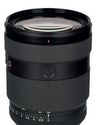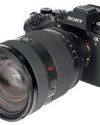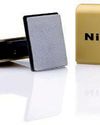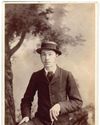As part of our ISO special, Steve Davey sees how the mighty Nikon D5 copes with low light and more on two demanding trips

It felt good to get a pro-body Nikon DSLR back into my hands. Apart from my first camera – a fully manual Pentax MX film SLR – I have only ever shot Nikon. I started with a Nikon F-801 as a student, but soon moved on to a couple of second-hand F4s and arguably my favourite cameras of all time, a brace of rock-solid F5s that I still have.
My first foray into digital photography was with the Nikon D2X. I had two of them, later replaced with the fantastic D3X. The resolution of the 24.6-million-pixel D3X far exceeds that of scanned film, but the camera also offered fantastic tonality and dynamic range in an ergonomic and robust pro-body.
As well as the ergonomics, I have always found Nikon pro bodies to be solid and resilient. They seem to put up with a lot of punishment before needing repair. That said, an inevitable part of being a travel and location photographer is that I flog my kit. In the past, I have had the entire shutter block of an F4 replaced in Bangkok, managed to drown a D2X in French Polynesia and fell on to a D3X and 70-200mm lens while fending off a rabid Laotian dog, cracking two ribs and literally tearing the face off the camera.
I moved from the D3X to the D800 for its astonishing resolution – a camera that became even sharper and gained a stop of ISO with the D810. Even with the MB-D12 battery pack it has much of the usability, but not the ergonomics, of the pro-bodies. The D800 has survived fairly unscathed, but the D810 did have a bit of a tripod incident. Combine these repairs with routine camera and lens servicing, and it is safe to say that I am no stranger at the Nikon Professional Services (NPS) Service Centre at Kingston in Greater London.
この記事は Amateur Photographer の February 4,2017 版に掲載されています。
7 日間の Magzter GOLD 無料トライアルを開始して、何千もの厳選されたプレミアム ストーリー、9,000 以上の雑誌や新聞にアクセスしてください。
すでに購読者です ? サインイン
この記事は Amateur Photographer の February 4,2017 版に掲載されています。
7 日間の Magzter GOLD 無料トライアルを開始して、何千もの厳選されたプレミアム ストーリー、9,000 以上の雑誌や新聞にアクセスしてください。
すでに購読者です? サインイン

Calling The Shots: A Queer History of Photography
Offering an unprecedented view of photographic history through a queer lens, this is a wonderful and powerful book, says

Large-aperture standard zoom, too
SONY has also revealed a new premium standard zoom, the FE 28-70mm F2 GM.

Super-fast, high-res Sony Alpha Ai II
SONY has announced its new professional full-frame flagship camera, the Alpha A1 II.

39 awesome accessories
Our round-up of the best accessories we've used and reviewed this year, along with some old favourites. There's something here for every budget, starting from just £7, including tripods, bags, filters and much more

Such a thing as society
This autumn sees the launch of a major new book and exhibition devoted to examining the multiplicities of photography during 1980s Britain. Peter Dench finds out more

Join Club
The sociable Canvey Island Photographic Club is keen to grow its in-person meet ups

Capturing flight
Winners and finalists of Bird Photographer of the Year share their tips for success with Hollie Latham Hucker

140 years of change
AP has become the world’s oldest surviving consumer photo magazine because we have moved with the times, says Nigel Atherton

Preserving history in platinum
A deep dive into the meticulous art of platinum printing, and the collaboration between the Royal Geographical Society and Salto Ulbeek. Mike Crawford explores how they brought historical photographs to life with enduring beauty and precision

Life in the past lane
What was life like for an amateur photographer in 1884? John Wade takes a trip back in time